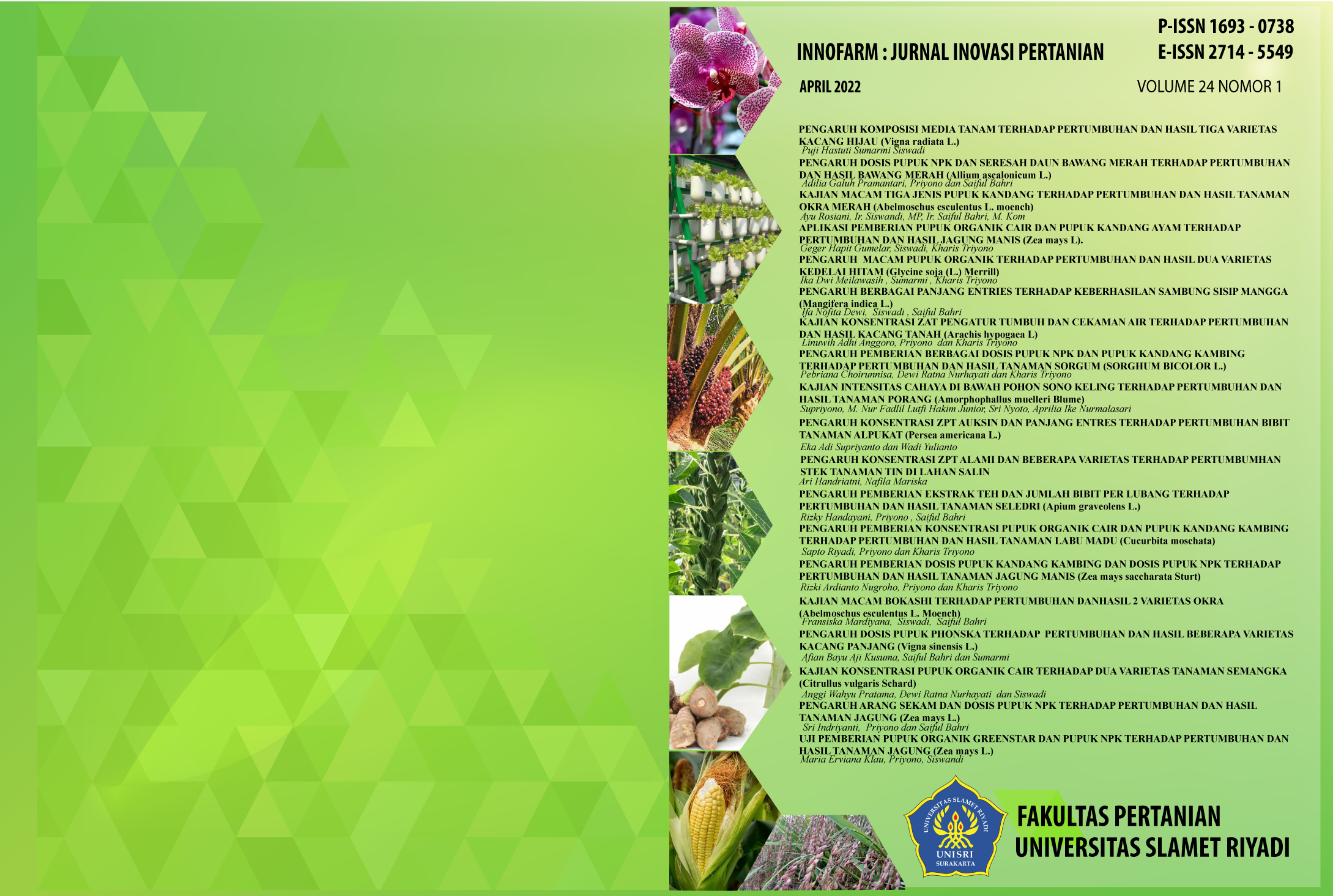The Effect of Application Tea Extract and Number of Seeds per Hole on Growth and Yield of Celery (Apium graveolens L.)
Effect of Application Tea Extract and Number of Seeds per Hole on Growth and Yield of Celery (Apium graveolens L.)
DOI:
https://doi.org/10.33061/innofarm.v24i1.7190Abstract
This study aims to determine the interaction effect of tea extract and the number of seeds per hole on the growth and yield of celery plants. This study used a factorial Completely Randomized Block Design (RAKL), which consisted of 2 factors, each treatment combination replicated 3 times. The two factors were: (1) the number of seeds per hole (S), with 3 levels, namely: S1: 1 seed per hole, S2: 2 seeds per hole, S3: 3 seeds per hole. (2) tea extract, with 4 levels, namely: T0: control, T1: dose of tea extract 1 ml/hole, T2: dose of tea extract 2 ml/hole, T3: dose of tea extract 3 ml/hole, obtained 12 treatment combinations. Analysis of the data using Analysis of Variation (ANOVA), if it is significantly different then a further test is carried out, namely the 5% level BNT test. The results showed that: (1) the interaction between the application of tea extract and the number of seeds per hole did not affect the growth and yield of celery plants, (2) the treatment of tea extract 3 ml/hole with 2 seeds per hole gave the best results on the wet weight of the stover. of 130.77 grams per hole is equivalent to 10.9 tons/Ha.
Keywords: Celery, tea extract, number of seeds per hole, growth, yield
Downloads
Published
Issue
Section
License
Copyright (c) 2022 Rizky Handayani, Priyono Priyono, Saiful Bahri

This work is licensed under a Creative Commons Attribution-NonCommercial 4.0 International License.
Authors who publish this journal agree to the following terms:
- Authors retain copyright and grant the journal right of first publication with the work simultaneously licensed under a Creative Commons Attribution License that allows others to share the work with an acknowledgement of the work's authorship and initial publication in this journal.
- Authors can separately make additional contractual arrangements for non-exclusive distribution published by the journal (e.g., publish it in a book), with an acknowledgement of its initial publication in this journal.
- Authors are allowed and encouraged to send their work via online (e.g., in the institutional repositories or their website) after published by the journal.


















